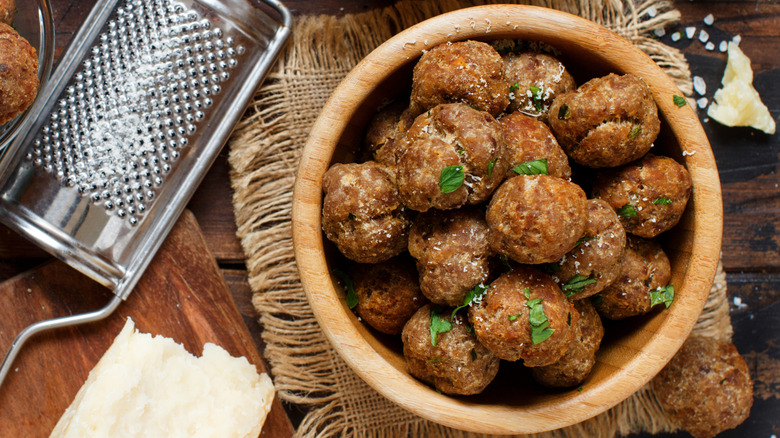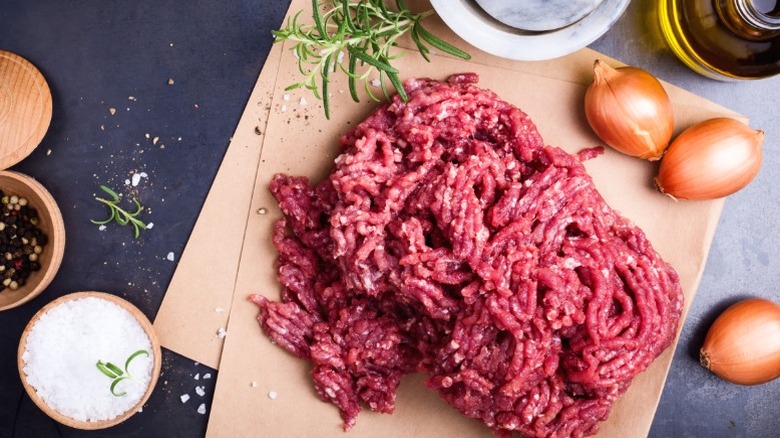To Give Meatballs The Perfect Crust, Ditch The Frying Pan And Open Your Oven
What makes a good meatball? There's the meat, of course, whether you're using beef alone or some combination of beef, pork, and veal. There's the level of moistness, which you can adjust by soaking your breadcrumbs in milk and forming a panade before mixing and forming your meatballs. And then, of course, there's the crust: that beautiful brown surface along the outside of the meatball that not only locks in juices thanks to the Maillard reaction, which kicks in when you brown meat, but also adds a deep, roasty flavor of its own. You can get it from shallow frying the meatballs in a pan, if you're the sort of person who's willing to risk oil spatters on your forearms. But what if you'd prefer a cooking method that's a little bit cleaner? That's where your oven comes in — more specifically, your broiler.
That's right! All you have to do is preheat your broiler while you're forming your meatballs, arrange them neatly on a baking tray, and put them under the heat until they're nice and crisp and toasty. This is an especially good idea if you're not looking to serve them immediately. If you store a batch of meatballs in the freezer, all you need to do when you're ready to serve is defrost them and warm them up in the sauce. The exact cook time with the broiler will depend on the size of your meatballs as well as what you intend to do with them – so use your own discretion. (Just make sure to avoid canned meatballs at all costs.)
How to keep your broiled meatballs moist
One thing you'll have to be careful about when cooking meatballs, especially when you're using dry heat like a broiler, is how to keep them moist and yielding. Nobody wants to bite into a succulent-looking meatball only to end up with what feels like a mouth full of garlic-flavored sand. Well, soaking your breadcrumbs in milk is a great way to prevent that problem, as the milk adds moisture without compromising structural integrity. You'll also want to use ground beef (or pork or veal or what have you) with a good lean-to-fat ratio; as with meatloaf, which can be ruined by an improper ratio, you don't want it too fatty or it will get greasy, but you want at least a little fat for flavor and moisture. A ratio of 80%-85% lean should do nicely.
What if you want to make extra sure that your meatballs have a beautiful golden crust? Just before you put them under the broiler, you can brush them with some neutral-flavored oil — think of it like frying without frying. Olive oil would probably be traditional for Italian cooking, but avocado or vegetable oil will also do just fine. Just do your best to keep from taking a bite as soon as they come out of the oven — although if they come out right, that'll be easier said than done.

